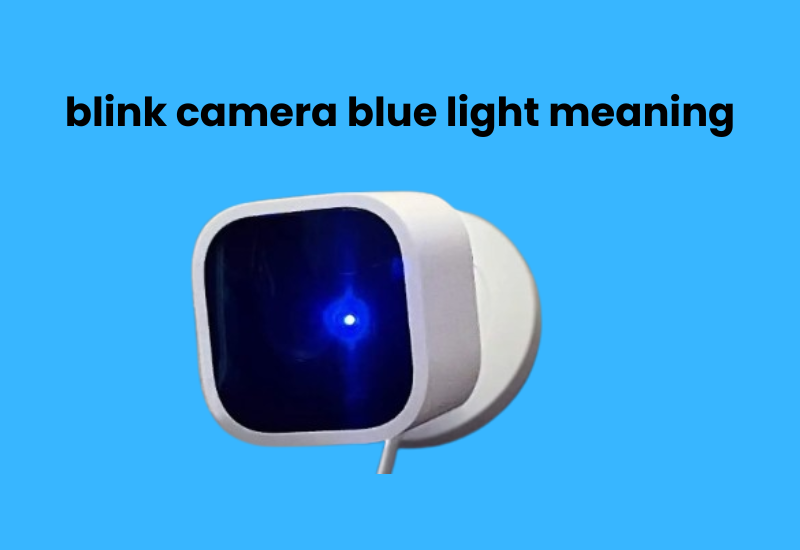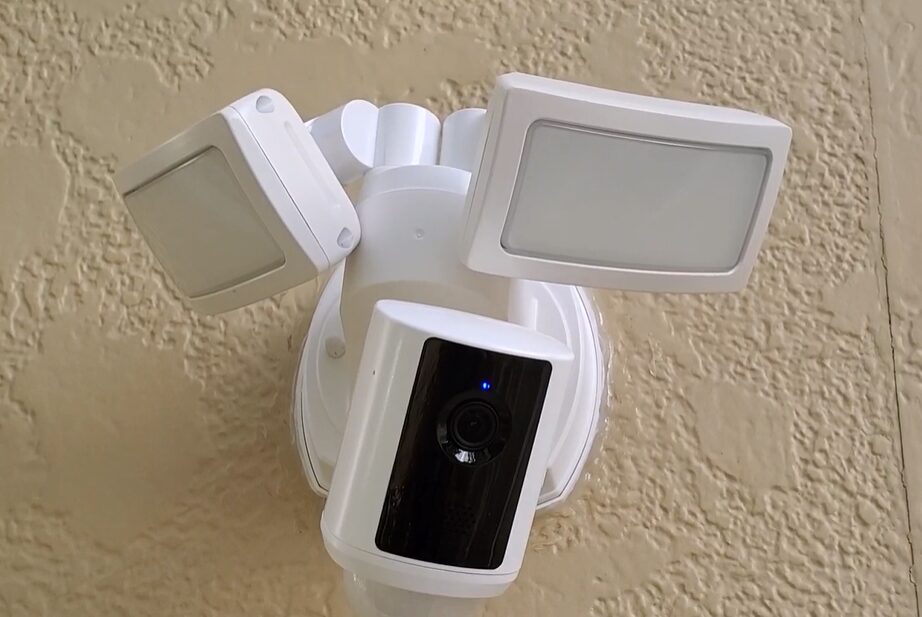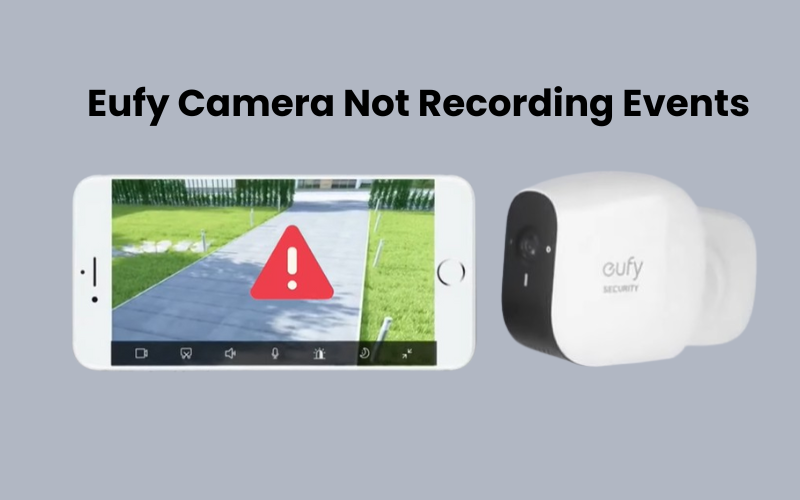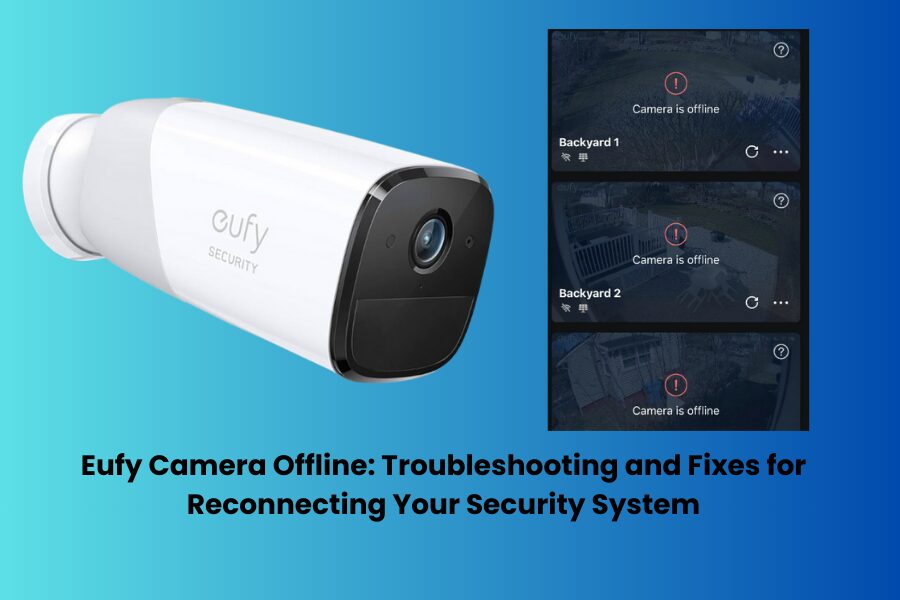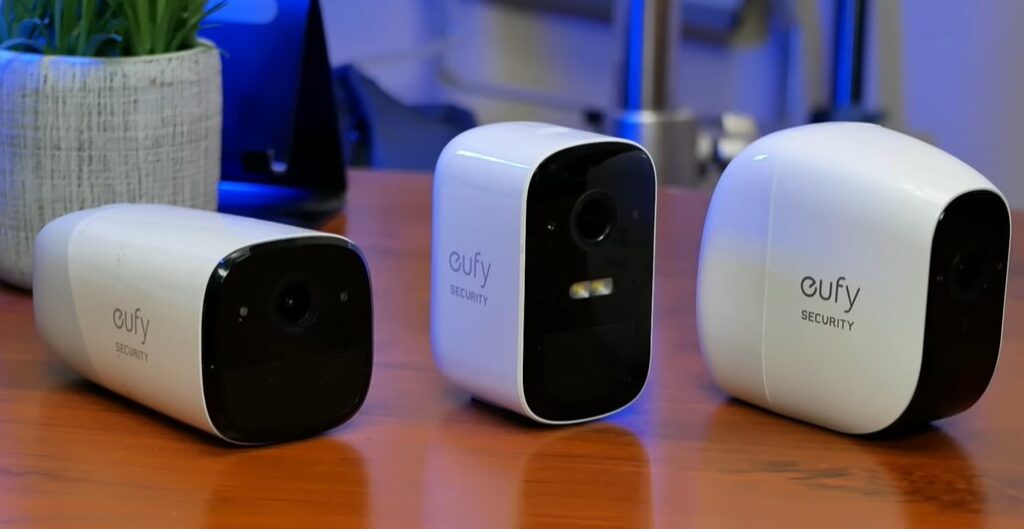You’ve just set up your new Blink camera system and are excited to monitor your home or business with the best features. In any case, you’ll see a flashing blue light when you turn it on, however, what’s the significance here? Try not to overreact on the off chance that you definitely disapprove of your camera, we’re here to help.
In this guide, we’ll uncover what the blue light on your blink camera means and what it tells you about your system.
In the end, you’ll know how to fix any problems and make sure your camera is working properly. So, let’s get started and unravel the mystery of flashing blue light.
Blink Camera Blue Light Meaning and Customization
If you own a Blink camera, you’ve probably noticed the small blue light on it. But what exactly does this light indicate to your Blink camera? The blue light on a Blink camera is a sign that your device is connected to your home network and operating as expected. It also flashes when the camera is recording or detecting motion.
However, for some people, the blue light may be too bright or distracting. If you prefer, you can turn off this light in the camera’s settings. Remember that even if you disable it, the light may still flash briefly during certain actions.
Generally, the blue light on a Squint camera is there to give you the certainty that it’s working appropriately, yet you can change it given your necessities and solace level.
Blink Camera’s Blue Light Indicator
If you own a Blink camera, you might notice a blue light flashing on its front. This blue light shows that the camera is actively recording to knowing when your camera is capturing footage can be helpful for your peace of mind.
Additionally, the blue light serves another purpose. It can discourage potential intruders by reminding them that the area is being watched the visual cue can add an extra layer of security to your home.
Some people may find the blue light a bit annoying or distracting. However, it is an essential element of the Blink camera.
What does Blue Light Indicator on Blink Cameras?
For those just starting with Blink cameras, understanding the blue light can be a bit confusing. This light is actually a helpful indicator that shows whether your Blink camera is active and functioning. During setup, the blue light will blink, letting you know it’s connected to your WiFi network.
Once your camera is armed, the blue light will stay on, indicating it’s ready to detect any motion and start recording. If you notice that the blue light isn’t on, there could be a few reasons, such as the camera not connecting to WiFi, low battery levels, or another technical problem. To make sure your Blink camera works properly, always check that the blue light is on and that it’s fully connected and ready to go.
Blink Camera Troubleshooting Blue Light Signals
If you’re using a Blink camera and notice a blue light, you might wonder what it means. The blue light serves as an indicator for different camera statuses. When it’s steady, the blue light simply shows that your camera is on and ready to use.
If the blue light is blinking, though, it usually points to one of two issues. Either your camera is trying to connect to the internet, or there’s a connection problem. To resolve this, first make sure your camera is within range of the Wi-Fi router and that your Wi-Fi signal is strong and stable.
Next, double-check that the login details for your camera are correct. If everything seems fine but the blue light continues to flash, try resetting the camera by disconnecting it and reconnecting it to your Wi-Fi. Should the issue persist, reach out to Blink’s support team for further assistance.
Motion Detection Triggered
When motion detection on your Blink camera is triggered, the blue light flashes briefly. If this feature isn’t working as expected, try these quick solutions:
- Camera Not Detecting Motion: Check if motion detection is enabled in the Blink app settings. Adjust the camera angle to cover the desired area better. Update firmware in the app to resolve any software issues.
- Too Many False Alarms: Lower motion sensitivity in the app to reduce minor triggers. Use “Activity Zones” to ignore specific areas and limit alerts.
- Delayed Motion Notifications: Ensure a strong Wi-Fi connection to avoid delays. Restart the camera from the Blink app to refresh its performance.
- Issues with Low-Light Detection: Enable night vision for better detection at night. Add lighting around the camera if night vision is still ineffective.
- Fast Battery Drain: Lower sensitivity and clip length to save battery life. Use motion scheduling to activate the camera only when needed.
Network Connection Check
If your Blink camera’s blue light keeps blinking, it likely has a network connection issue. Here are quick steps to solve it:
- Move the camera closer to the router and remove obstructions. A strong signal is key for the camera to work smoothly.
- Disconnect your router, wait for 10 seconds, and then reconnect it. After that, check if other devices are connecting correctly.
- Remove and reinsert the batteries. Reconnect the camera through the Blink app if needed.
- Blink cameras work best on 2.4 GHz Wi-Fi. Check your router’s settings and switch if it’s on 5 GHz.
- Make sure both the Blink app and camera firmware are updated for better performance.
- Use the reset button on the camera to start fresh. Follow the setup steps again in the Blink app.
No Blue Light Visible
If your Blink camera is not showing a blue light, there are several steps you can take to diagnose and fix the issue. First, check if the camera is in privacy mode. When privacy mode is activated, the camera stops recording and the blue light will not be visible. You can disable privacy mode through the Blink app by selecting the camera and turning off the privacy setting.
Next, verify if the LED status indicator has been turned off. In the camera settings within the app, ensure that the “Status LED” option is enabled. If both settings are correct and the blue light is still not visible, try restarting the camera by removing the batteries and reinserting them after a few seconds.
Additionally, check the power source to ensure the camera has adequate battery life. If the blue light remains off despite these efforts, it may indicate a more serious hardware or connectivity issue, in which case contacting Blink support for further assistance is recommended.
Privacy Mode Enabled
If your Blink camera is not recording and the blue light is off, it might be in privacy mode. This mode disables the camera’s recording function to protect your privacy.
To resolve this issue, check the settings in the Blink app. Open the app and select the camera in question. Look for the privacy mode option, which is usually found under the camera settings.
If it’s enabled, simply toggle it off. Once privacy mode is disabled, the camera should resume its normal recording functions, and the blue light will indicate activity as expected. If you continue to experience issues, ensure your app is updated and try restarting both the camera and the app for optimal performance.
LED Status Turned Off
If your Blink camera’s blue light is off, and you want to ensure it’s functioning correctly, first check the LED status settings in the Blink app. Open the app and navigate to the camera settings for the device in question. Look for the option labeled “Status LED” or “LED Indicator.”
If this setting is toggled off, the blue light won’t appear, even when the camera is recording or detecting motion. Simply switch it back on to restore the light functionality. After making changes, monitor the camera for a few minutes to see if the blue light activates as expected.
If the blue light still does not illuminate, try restarting the camera or performing a factory reset. Make sure your camera is connected to a stable power source because an insufficient power supply can impact the LED’s performance. If issues persist, consult Blink’s customer support for further assistance.
Blue Light Not Showing During Motion Detection
The Blink camera’s blue light isn’t showing during motion detection, Which can be frustrating. Here’s a quick troubleshooting guide to help you resolve this issue.
- Check Camera Settings: Launch the app on your smartphone. Tap on the specific camera. Ensure the “Status LED” is turned on. If it’s off, the blue light won’t show.
- Update the Blink App: Go to the App Store or Google Play Store. Download any available updates, as they may fix bugs affecting the camera.
- Restart the Camera: Unplug the camera for about 10 seconds, then plug it back in. Check if the blue light activates during motion detection.
- Check Wi-Fi Connectivity: Ensure the camera is within a good range of your Wi-Fi router. A simple restart can enhance the connection. Confirm that other devices on the network are working correctly.
- Review Motion Detection Settings: Make sure motion detection is enabled in the Blink app. If it’s set low, increase the sensitivity to ensure it detects motion effectively.
- Reset the Camera: Find and press the reset button for about 10 seconds. Set up the camera again in the Blink app.
Final Thoughts
Understanding the blue light on your Blink camera is essential for effective use and troubleshooting. If you encounter issues like the light not functioning as expected or persistent blinking, first check your Wi-Fi connection and camera settings in the Blink app.
Restarting the camera or repositioning it closer to the router can often resolve connectivity problems. If the blue light remains off during motion detection, revisit the app settings to ensure the LED indicator is enabled.
By being proactive and familiar with these troubleshooting steps, you can ensure that your blink camera is working as smoothly as ever and meeting your security needs.

